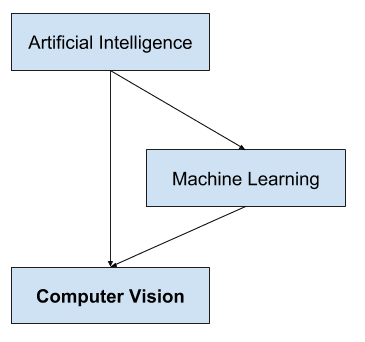Computer Vision, often abbreviated as CV, is defined as a field of study that seeks to develop techniques to help computers “see” and understand the content of digital images such as photographs and videos.
The problem of computer vision appears simple because it is trivially solved by people, even very young children. Nevertheless, it largely remains an unsolved problem based both on the limited understanding of biological vision and because of the complexity of vision perception in a dynamic and nearly infinitely varying physical world.
In this post, you will discover a gentle introduction to the field of computer vision.
After reading this post, you will know:
- The goal of the field of computer vision and its distinctness from image processing.
- What makes the problem of computer vision challenging.
- Typical problems or tasks pursued in computer vision.
Let’s get started.

A Gentle Introduction to Computer Vision
Photo by Axel Kristinsson, some rights reserved.
Overview
This tutorial is divided into four parts; they are:
- Desire for Computers to See
- What Is Computer Vision
- Challenge of Computer Vision
- Tasks in Computer Vision
Desire for Computers to See
We are awash in images.
Smartphones have cameras, and taking a photo or video and sharing it has never been easier, resulting in the incredible growth of modern social networks like Instagram.
YouTube might be the second largest search engine and hundreds of hours of video are uploaded every minute and billions of videos are watched every day.
The internet is comprised of text and images. It is relatively straightforward to index and search text, but in order to index and search images, algorithms need to know what the images contain. For the longest time, the content of images and video has remained opaque, best described using the meta descriptions provided by the person that uploaded them.
To get the most out of image data, we need computers to “see” an image and understand the content.
This is a trivial problem for a human, even young children.
- A person can describe the content of a photograph they have seen once.
- A person can summarize a video that they have only seen once.
- A person can recognize a face that they have only seen once before.
We require at least the same capabilities from computers in order to unlock our images and videos.
What Is Computer Vision?
Computer vision is a field of study focused on the problem of helping computers to see.
At an abstract level, the goal of computer vision problems is to use the observed image data to infer something about the world.
— Page 83, Computer Vision: Models, Learning, and Inference, 2012.
It is a multidisciplinary field that could broadly be called a subfield of artificial intelligence and machine learning, which may involve the use of specialized methods and make use of general learning algorithms.

Overview of the Relationship of Artificial Intelligence and Computer Vision
As a multidisciplinary area of study, it can look messy, with techniques borrowed and reused from a range of disparate engineering and computer science fields.
One particular problem in vision may be easily addressed with a hand-crafted statistical method, whereas another may require a large and complex ensemble of generalized machine learning algorithms.
Computer vision as a field is an intellectual frontier. Like any frontier, it is exciting and disorganized, and there is often no reliable authority to appeal to. Many useful ideas have no theoretical grounding, and some theories are useless in practice; developed areas are widely scattered, and often one looks completely inaccessible from the other.
— Page xvii, Computer Vision: A Modern Approach, 2002.
The goal of computer vision is to understand the content of digital images. Typically, this involves developing methods that attempt to reproduce the capability of human vision.
Understanding the content of digital images may involve extracting a description from the image, which may be an object, a text description, a three-dimensional model, and so on.
Computer vision is the automated extraction of information from images. Information can mean anything from 3D models, camera position, object detection and recognition to grouping and searching image content.
— Page ix, Programming Computer Vision with Python, 2012.
Computer Vision and Image Processing
Computer vision is distinct from image processing.
Image processing is the process of creating a new image from an existing image, typically simplifying or enhancing the content in some way. It is a type of digital signal processing and is not concerned with understanding the content of an image.
A given computer vision system may require image processing to be applied to raw input, e.g. pre-processing images.
Examples of image processing include:
- Normalizing photometric properties of the image, such as brightness or color.
- Cropping the bounds of the image, such as centering an object in a photograph.
- Removing digital noise from an image, such as digital artifacts from low light levels.
Challenge of Computer Vision
Helping computers to see turns out to be very hard.
The goal of computer vision is to extract useful information from images. This has proved a surprisingly challenging task; it has occupied thousands of intelligent and creative minds over the last four decades, and despite this we are still far from being able to build a general-purpose “seeing machine.”
— Page 16, Computer Vision: Models, Learning, and Inference, 2012.
Computer vision seems easy, perhaps because it is so effortless for humans.
Initially, it was believed to be a trivially simple problem that could be solved by a student connecting a camera to a computer. After decades of research, “computer vision” remains unsolved, at least in terms of meeting the capabilities of human vision.
Making a computer see was something that leading experts in the field of Artificial Intelligence thought to be at the level of difficulty of a summer student’s project back in the sixties. Forty years later the task is still unsolved and seems formidable.
— Page xi, Multiple View Geometry in Computer Vision, 2004.
One reason is that we don’t have a strong grasp of how human vision works.
Studying biological vision requires an understanding of the perception organs like the eyes, as well as the interpretation of the perception within the brain. Much progress has been made, both in charting the process and in terms of discovering the tricks and shortcuts used by the system, although like any study that involves the brain, there is a long way to go.
Perceptual psychologists have spent decades trying to understand how the visual system works and, even though they can devise optical illusions to tease apart some of its principles, a complete solution to this puzzle remains elusive
— Page 3, Computer Vision: Algorithms and Applications, 2010.
Another reason why it is such a challenging problem is because of the complexity inherent in the visual world.
A given object may be seen from any orientation, in any lighting conditions, with any type of occlusion from other objects, and so on. A true vision system must be able to “see” in any of an infinite number of scenes and still extract something meaningful.
Computers work well for tightly constrained problems, not open unbounded problems like visual perception.
Tasks in Computer Vision
Nevertheless, there has been progress in the field, especially in recent years with commodity systems for optical character recognition and face detection in cameras and smartphones.
Computer vision is at an extraordinary point in its development. The subject itself has been around since the 1960s, but only recently has it been possible to build useful computer systems using ideas from computer vision.
— Page xviii, Computer Vision: A Modern Approach, 2002.
The 2010 textbook on computer vision titled “Computer Vision: Algorithms and Applications” provides a list of some high-level problems where we have seen success with computer vision.
- Optical character recognition (OCR)
- Machine inspection
- Retail (e.g. automated checkouts)
- 3D model building (photogrammetry)
- Medical imaging
- Automotive safety
- Match move (e.g. merging CGI with live actors in movies)
- Motion capture (mocap)
- Surveillance
- Fingerprint recognition and biometrics
It is a broad area of study with many specialized tasks and techniques, as well as specializations to target application domains.
Computer vision has a wide variety of applications, both old (e.g., mobile robot navigation, industrial inspection, and military intelligence) and new (e.g., human computer interaction, image retrieval in digital libraries, medical image analysis, and the realistic rendering of synthetic scenes in computer graphics).
— Page xvii, Computer Vision: A Modern Approach, 2002.
It may be helpful to zoom in on some of the more simpler computer vision tasks that you are likely to encounter or be interested in solving given the vast number of publicly available digital photographs and videos available.
Many popular computer vision applications involve trying to recognize things in photographs; for example:
- Object Classification: What broad category of object is in this photograph?
- Object Identification: Which type of a given object is in this photograph?
- Object Verification: Is the object in the photograph?
- Object Detection: Where are the objects in the photograph?
- Object Landmark Detection: What are the key points for the object in the photograph?
- Object Segmentation: What pixels belong to the object in the image?
- Object Recognition: What objects are in this photograph and where are they?
Other common examples are related to information retrieval; for example: finding images like an image or images that contain an object.
Further Reading
This section provides more resources on the topic if you are looking to go deeper.
Books
- Computer Vision: Models, Learning, and Inference, 2012.
- Programming Computer Vision with Python, 2012.
- Multiple View Geometry in Computer Vision, 2004.
- Computer Vision: Algorithms and Applications, 2010.
- Computer Vision: A Modern Approach, 2002.
Articles
Summary
In this post, you discovered a gentle introduction to the field of computer vision.
Specifically, you learned:
- The goal of the field of computer vision and its distinctness from image processing.
- What makes the problem of computer vision challenging.
- Typical problems or tasks pursued in computer vision.
Do you have any questions?
Ask your questions in the comments below and I will do my best to answer.
The post A Gentle Introduction to Computer Vision appeared first on Machine Learning Mastery.
Machine Learning Mastery published first on Machine Learning Mastery
No comments:
Post a Comment